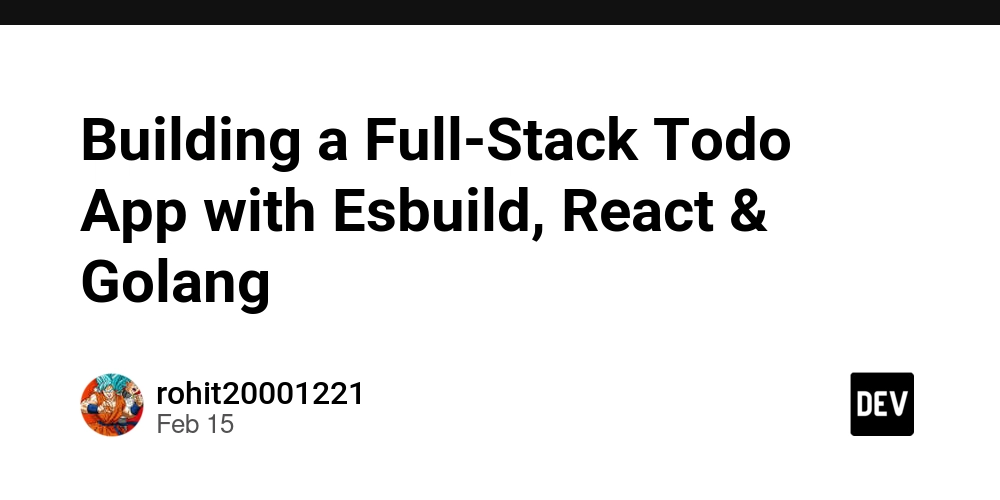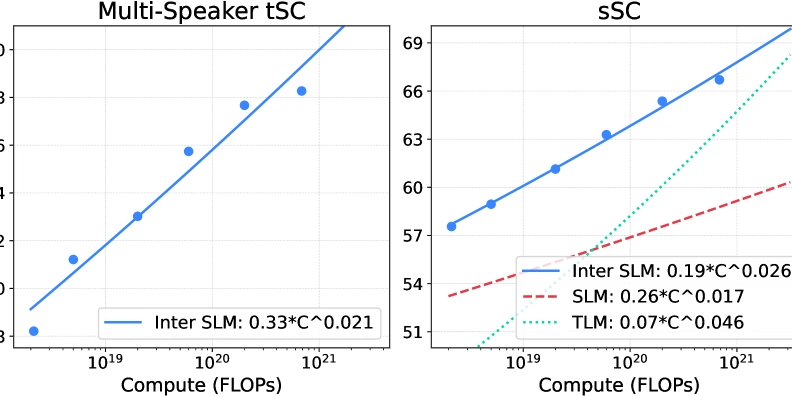Building a Full-Stack Todo App with Esbuild, React & Golang
In this post, we explore how to build a full-stack to-do application using Go, React, Esbuild, and import maps—eliminating the need for traditional Node modules. Our setup enables an efficient workflow with server-side rendering, client-side routing, and seamless state management. Backend: Go HTTP Server and Page Rendering Our backend is a simple HTTP server built with Go. It serves static files, handles API requests, and dynamically renders pages using Esbuild. Initializing the Server The main.go file defines our HTTP server. It sets up a SQLite database for managing to-do items and builds necessary frontend files: func init() { stdLibFiles, _ := filepath.Glob("ui/lib/*.jsx") api.Build(api.BuildOptions{ EntryPoints: stdLibFiles, Bundle: true, Write: true, Outdir: ".web/lib", JSX: api.JSXAutomatic, External: []string{"react", "react-dom", "@mui/material", "@emotion/react", "@emotion/styled"}, Format: api.FormatESModule, MinifyWhitespace: true, }) controller = *controllers.New(db.OpenConnection()) if _, err := controller.DB.Exec(` CREATE TABLE IF NOT EXISTS todos ( id INTEGER PRIMARY KEY AUTOINCREMENT, title TEXT, description TEXT, is_completed BOOLEAN ) `); err != nil { panic(err) } } Serving Pages We define routes for the home and about pages, leveraging the RenderPage function to dynamically inject data: http.HandleFunc("/", func(w http.ResponseWriter, r *http.Request) { defer controllers.HandleError(w) todos := controller.GetTodos() isCode := r.URL.Query().Get("isCode") == "true" content := controller.RenderPage("index", map[string]any{"todos": todos}, isCode) w.WriteHeader(http.StatusOK) w.Write(content) }) The RenderPage function compiles JSX files using Esbuild and injects context data: func (c *Controller) RenderPage(page string, ctx map[string]any, isCode bool) []byte { tmpl, err := template.New("__WEB_ROOT__").Funcs(template.FuncMap{ "marshal": marshal, }).Parse(HTML_PAGE) if err != nil { panic(err) } result := api.Build(api.BuildOptions{ EntryPoints: []string{fmt.Sprintf("ui/pages/%s.jsx", page)}, Bundle: true, Write: false, JSX: api.JSXAutomatic, External: []string{"react", "react-dom", "@lib", "@mui/material", "@emotion/react", "@emotion/styled"}, Format: api.FormatESModule, }) codeBytes := result.OutputFiles[0].Contents code := b64.StdEncoding.EncodeToString(codeBytes) code = fmt.Sprintf("data:text/javascript;base64,%s", code) if isCode { return []byte(code) } buf := new(bytes.Buffer) args := map[string]any{ "Page": page, "Context": ctx, "Code": code, } if err := tmpl.Execute(buf, args); err != nil { panic(err) } return buf.Bytes() } var HTML_PAGE = ` {{ if .Context }} {{ .Context | marshal }} {{ else }} {} {{ end }} { "imports": { "react": "https://esm.sh/react@18.2.0", "react/": "https://esm.sh/react@18.2.0/", "react-dom": "https://esm.sh/react-dom@18.2.0", "react-dom/": "https://esm.sh/react-dom@18.2.0/", "@lib/": "/_lib/", "@mui/material": "https://esm.sh/@mui/material?external=react,react-dom,@emotion/react,@emotion/styles&exports=Box,Typography,TextField,Button,List,ListItem,ListItemText", "@emotion/react": "https://esm.sh/@emotion/react?external=react,react-dom", "@emotion/styled": "https://esm.sh/@emotion/styled?external=react,react-dom" } } import ui from "{{ .Code }}"; import { createElement } from "react"; import { createRoot } from "react-dom/client"; globalThis.____WEB_ROOT = createRoot( document.getElementById("root"), ); globalThis.____WEB_ROOT.render(createElement(ui)); window.addEventListener("popstate", async (e) => { const code = await ( await fetch(`${e.target.location.pathname}?isCode=true`) ).text(); const m = await import(code); globalThis.____WEB_ROOT.render(createElement(ui)); }); ` Frontend: Import Maps, Client-Side Routing, and Context Management Our frontend architecture follows a modular approach, using import maps to manage dependencies ins

In this post, we explore how to build a full-stack to-do application using Go, React, Esbuild, and import maps—eliminating the need for traditional Node modules. Our setup enables an efficient workflow with server-side rendering, client-side routing, and seamless state management.
Backend: Go HTTP Server and Page Rendering
Our backend is a simple HTTP server built with Go. It serves static files, handles API requests, and dynamically renders pages using Esbuild.
Initializing the Server
The main.go file defines our HTTP server. It sets up a SQLite database for managing to-do items and builds necessary frontend files:
func init() {
stdLibFiles, _ := filepath.Glob("ui/lib/*.jsx")
api.Build(api.BuildOptions{
EntryPoints: stdLibFiles,
Bundle: true,
Write: true,
Outdir: ".web/lib",
JSX: api.JSXAutomatic,
External: []string{"react", "react-dom", "@mui/material", "@emotion/react", "@emotion/styled"},
Format: api.FormatESModule,
MinifyWhitespace: true,
})
controller = *controllers.New(db.OpenConnection())
if _, err := controller.DB.Exec(`
CREATE TABLE IF NOT EXISTS todos (
id INTEGER PRIMARY KEY AUTOINCREMENT,
title TEXT,
description TEXT,
is_completed BOOLEAN
)
`); err != nil {
panic(err)
}
}
Serving Pages
We define routes for the home and about pages, leveraging the RenderPage function to dynamically inject data:
http.HandleFunc("/", func(w http.ResponseWriter, r *http.Request) {
defer controllers.HandleError(w)
todos := controller.GetTodos()
isCode := r.URL.Query().Get("isCode") == "true"
content := controller.RenderPage("index", map[string]any{"todos": todos}, isCode)
w.WriteHeader(http.StatusOK)
w.Write(content)
})
The RenderPage function compiles JSX files using Esbuild and injects context data:
func (c *Controller) RenderPage(page string, ctx map[string]any, isCode bool) []byte {
tmpl, err := template.New("__WEB_ROOT__").Funcs(template.FuncMap{
"marshal": marshal,
}).Parse(HTML_PAGE)
if err != nil {
panic(err)
}
result := api.Build(api.BuildOptions{
EntryPoints: []string{fmt.Sprintf("ui/pages/%s.jsx", page)},
Bundle: true,
Write: false,
JSX: api.JSXAutomatic,
External: []string{"react", "react-dom", "@lib", "@mui/material", "@emotion/react", "@emotion/styled"},
Format: api.FormatESModule,
})
codeBytes := result.OutputFiles[0].Contents
code := b64.StdEncoding.EncodeToString(codeBytes)
code = fmt.Sprintf("data:text/javascript;base64,%s", code)
if isCode {
return []byte(code)
}
buf := new(bytes.Buffer)
args := map[string]any{
"Page": page,
"Context": ctx,
"Code": code,
}
if err := tmpl.Execute(buf, args); err != nil {
panic(err)
}
return buf.Bytes()
}
var HTML_PAGE = `
`
Frontend: Import Maps, Client-Side Routing, and Context Management
Our frontend architecture follows a modular approach, using import maps to manage dependencies instead of Node modules.
Client-Side Navigation (link.js)
The Link component provides seamless navigation without full-page reloads:
import { createElement } from "react";
export const Link = ({ to, children }) => {
return (
<div
onClick={async () => {
const path = `${to}?isCode=true`;
const code = await fetch(path);
const m = await import(await code.text());
history.pushState({}, "", to);
const root = globalThis.____WEB_ROOT;
root.render(createElement(m.default));
}}
>
{children}
div>
);
};
Managing Global State (context.js)
The context.js file extracts and provides server-injected data:
export const usePageContext = () => {
return JSON.parse(document.getElementById("__WEB_ROOT_DATA__").text);
};
Home Page (index.jsx)
The home page displays the list of to-do items retrieved from the server:
import { useState } from "react";
import { Link } from "@lib/link.js";
import { usePageContext } from "@lib/context.js";
import {
Button,
Typography,
Box,
TextField,
List,
ListItem,
ListItemText,
} from "@mui/material";
const HomePage = () => {
const [count, setCount] = useState(0);
const data = usePageContext();
return (
<Box>
<Box
borderBottom={2}
borderColor={(theme) => theme.palette.divider}
p={1}
display={"flex"}
>
<Box flex={1}>
<Typography>DashboardTypography>
Box>
<Link to="/about">
<Button>About PageButton>
Link>
Box>
<Box p={4}>
<Typography>Todo ListTypography>
<form method="POST" action={"/createTodo"}>
<Box display="flex" flexDirection="column" gap={2} p={2}>
<TextField
type="text"
required={true}
name="title"
placeholder="Title"
variant="outlined"
/>
<TextField
type="text"
required={true}
name="description"
placeholder="Description"
variant="outlined"
/>
<Box>
<Button type="submit" variant="contained">
Create
Button>
Box>
Box>
form>
<Box mt={2}>
<List>
{data.todos.map((todo) => (
<ListItem key={todo.id}>
<ListItemText
primary={todo.title}
secondary={todo.description}
/>
ListItem>
))}
List>
Box>
Box>
Box>
);
};
export default HomePage;
About Page (about.jsx)
A simple about page:
import { Typography, Box, Button } from "@mui/material";
import { Link } from "@lib/link.js";
const AboutPage = () => {
return (
<Box>
<Typography>About PageTypography>
<Link to="/">
<Button>HomeButton>
Link>
Box>
);
};
export default AboutPage;
Conclusion
This article demonstrates how we can leverage import maps and esbuild to create a React-based full-stack application without relying on Node modules. By dynamically injecting server-side data into the frontend, we achieve a lightweight and efficient architecture. The approach outlined ensures seamless bundling, efficient routing, and a structured way to manage UI components while keeping dependencies minimal.
For the full code example, visit:
https://github.com/rohit20001221/go-esbuild-react-todo.git











































































































































































![[The AI Show Episode 142]: ChatGPT’s New Image Generator, Studio Ghibli Craze and Backlash, Gemini 2.5, OpenAI Academy, 4o Updates, Vibe Marketing & xAI Acquires X](https://www.marketingaiinstitute.com/hubfs/ep%20142%20cover.png)




























































































































![[DEALS] The Premium Learn to Code Certification Bundle (97% off) & Other Deals Up To 98% Off – Offers End Soon!](https://www.javacodegeeks.com/wp-content/uploads/2012/12/jcg-logo.jpg)


![From drop-out to software architect with Jason Lengstorf [Podcast #167]](https://cdn.hashnode.com/res/hashnode/image/upload/v1743796461357/f3d19cd7-e6f5-4d7c-8bfc-eb974bc8da68.png?#)








































































































.png?#)

































_Christophe_Coat_Alamy.jpg?#)
 (1).webp?#)





































































































![Apple Considers Delaying Smart Home Hub Until 2026 [Gurman]](https://www.iclarified.com/images/news/96946/96946/96946-640.jpg)
![iPhone 17 Pro Won't Feature Two-Toned Back [Gurman]](https://www.iclarified.com/images/news/96944/96944/96944-640.jpg)
![Tariffs Threaten Apple's $999 iPhone Price Point in the U.S. [Gurman]](https://www.iclarified.com/images/news/96943/96943/96943-640.jpg)




































































































































